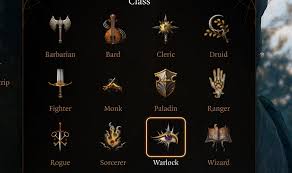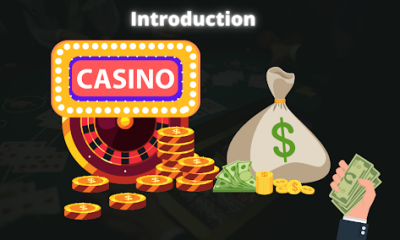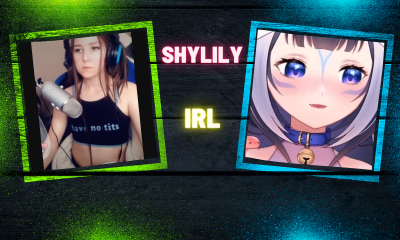Gaming
Baldur’s Gate 3 Classes Tier List (2025): Best Classes Ranked for Every Playstyle

Baldur’s Gate 3 offers a wide variety of classes, each with its own unique identity, role in combat, and potential for roleplay. Whether you’re a min-maxer hunting for the most broken builds or a story-driven adventurer trying to create a character that fits the fantasy, this Baldur’s Gate 3 Classes Tier List (2025) ranks all classes based on overall performance, versatility, and impact in both combat and dialogue-driven scenarios.
This guide assumes you’re playing on Balanced or Tactician difficulty and want a character that can handle the toughest fights, offer utility, and be fun to play.
🔹 S-Tier: Overpowered and Highly Versatile
These classes dominate the battlefield and offer immense value across all acts, both in and out of combat.
⭐ Paladin
- Role: Tank / Burst DPS / Support
- Why It’s S-Tier: Paladins are currently considered the strongest class in the game due to Divine Smite, which allows insane burst damage without expending spell slots. Combined with heavy armor, Lay on Hands, and Aura of Protection, they are nearly unkillable and can deal massive single-turn damage.
- Best Subclass: Oath of Vengeance (for crit-heavy burst) or Oath of Ancients (for survivability).
⭐ Sorcerer
- Role: Nuker / Crowd Control
- Why It’s S-Tier: Metamagic is what sets Sorcerers apart. The ability to Twin or Quicken powerful spells like Hold Person or Fireball creates devastating combos. They’re squishy, but with good positioning, Sorcerers can trivialize encounters.
- Best Subclass: Draconic Bloodline (extra HP + elemental damage) or Storm Sorcery (mobility-focused builds).
⭐ Cleric
- Role: Support / Healer / DPS / Utility
- Why It’s S-Tier: Clerics are incredibly flexible. They can heal, tank, control enemies, or even act as frontline DPS with Spiritual Weapon and Spirit Guardians. High Wisdom also makes them dialogue powerhouses.
- Best Subclass: Light Domain (blasting) or Life Domain (healing and durability).
🔸 A-Tier: Powerful but Situational
These classes are strong in the right hands or when built around specific synergies but can require a bit more strategy to shine.
⭐ Wizard
- Role: Versatile Caster / Control / AoE
- Why It’s A-Tier: Wizards boast the largest spell list and extreme adaptability. While fragile, they can prepare for nearly any scenario with the right scrolls. They fall slightly behind Sorcerers in terms of raw damage but make up for it with sheer flexibility.
- Best Subclass: Evocation (safe AoE) or Abjuration (for warding and tanky builds).
⭐ Fighter
- Role: Frontline DPS / Tank / Utility
- Why It’s A-Tier: The Fighter’s Action Surge allows them to dominate turns. Champion is simple but effective, while Battle Master offers deep tactical options. They fall short of Paladins in raw impact but are incredibly dependable.
- Best Subclass: Battle Master (for versatility) or Eldritch Knight (for spell utility).
⭐ Rogue
- Role: Stealth / Single-target DPS / Utility
- Why It’s A-Tier: Rogues shine in exploration and social situations, and in combat, their Sneak Attack deals huge damage with the right setup. They excel at initiative-based damage and hit-and-run tactics.
- Best Subclass: Thief (extra bonus action) or Assassin (ambush advantage).
⭐ Warlock
- Role: Utility / Damage / Charisma Caster
- Why It’s A-Tier: Eldritch Blast spam with Agonizing Blast is still very strong. Warlocks have short rest spell slots, making them sustainable in long dungeons. Pact of the Blade builds are especially fun and effective.
- Best Subclass: The Fiend (for survivability and damage) or The Great Old One (for flavor and crowd control).
🔹 B-Tier: Niche Picks or Team-Dependent
These classes can work well, especially in specific group compositions or roleplay setups, but are harder to optimize.
⭐ Barbarian
- Role: Melee Tank / Burst Damage
- Why It’s B-Tier: Barbarians bring raw power and survivability with Rage, especially against physical attackers. However, their lack of utility and ranged options makes them weaker in many encounters.
- Best Subclass: Berserker (for raw damage) or Wildheart (for support and crowd control).
⭐ Druid
- Role: Shapeshifting / Control / Healing
- Why It’s B-Tier: Druids are flexible but not as impactful as Clerics or Sorcerers. Their Wild Shape is fun but situational. Moon Druids can tank early but fall off later, while Land Druids offer stronger spellcasting.
- Best Subclass: Circle of the Land (spell economy) or Circle of the Moon (shapeshifting).
⭐ Bard
- Role: Support / Social Utility / Crowd Control
- Why It’s B-Tier: Excellent in dialogue and buffs, but less effective in raw combat unless built around spellcasting. Jack of All Trades really shines in roleplay, but they lack a consistent damage source compared to Sorcerers or Clerics.
- Best Subclass: College of Lore (spell versatility) or College of Swords (melee hybrid).
🔸 C-Tier: Fun but Flawed
These classes are flavorful and can be powerful in creative builds, but they are not optimal for a first playthrough or high-difficulty content.
⭐ Monk
- Role: Mobility / Control / Unarmed DPS
- Why It’s C-Tier: While fast and stylish, Monks suffer from low damage scaling and a lack of good magical options. They’re fun to roleplay but struggle on Tactician due to limited crowd control and survivability.
- Best Subclass: Way of Shadow (stealth and mobility) or Way of the Open Hand (control-focused).
⭐ Ranger
- Role: Ranged DPS / Summons / Exploration
- Why It’s C-Tier: Rangers can be effective with the right setup, but their kit feels underwhelming next to Sorcerers, Paladins, or even Fighters. They excel in exploration and long-range engagement but lack the burst or utility to compete.
- Best Subclass: Gloom Stalker (for surprise rounds and extra attacks) or Beast Master (summon synergy).
🧠 Best Class Combos and Multiclass Options
Multiclassing in BG3 is surprisingly strong if you know what to mix.
- Paladin + Sorcerer – Oathbreaker Sorcadin combo for explosive Divine Smite crits.
- Fighter + Warlock – Pact Blade Warlock with Fighter’s Action Surge for burst.
- Rogue + Fighter – High initiative assassin build for early kills.
- Bard + Cleric – Buff machine with powerful AoE control and healing.
🏆 Best Classes by Role
🔸 Best Solo Class: Paladin
🔸 Best Party Support: Cleric
🔸 Best Spellcaster: Sorcerer
🔸 Best Melee DPS: Paladin / Fighter
🔸 Best Stealth Class: Rogue
🔸 Best Crowd Control: Wizard / Sorcerer
🔸 Best for Beginners: Paladin / Fighter
Final Thoughts
While every class in Baldur’s Gate 3 is playable and enjoyable, some stand out for their raw power, flexibility, and consistency across different stages of the game. Classes like Paladin, Sorcerer, and Cleric are perfect for players who want to dominate combat while enjoying rich narrative choices. Others, like Monk or Ranger, can still be rewarding if you’re up for a challenge or looking for a unique playthrough.
Ultimately, the best class is the one that fits your playstyle—but this tier list should help you decide where to start for a powerful and satisfying journey through Faerûn.













